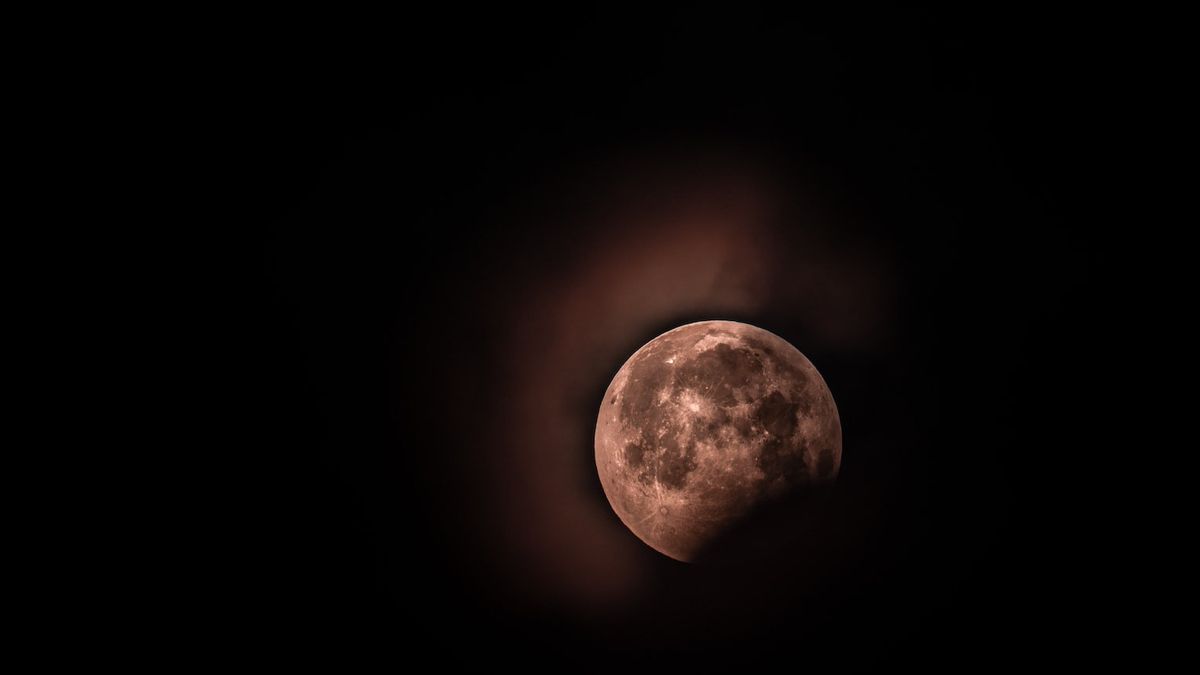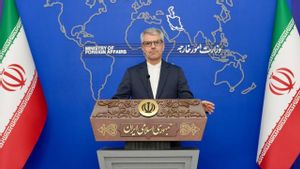JAKARTA - Residents of West Nusa Tenggara can watch the total lunar eclipse on Tuesday 8 November from all over the local area.
BMKG forecaster for Geophysics Station Zaenudin Abdul Majid Lombok Anggi Dewita in a written statement in Praya, Saturday, said the observable phase starts from the U2 phase (the total eclipse starts) at 18.16 WITA until the P4 phase (the eclipse ends) at 21.57 WITA.
Phase P1 (starting eclipse) and phase U1 (partial eclipse starting), he said, could not be observed because the Moon had not yet published.
He said the duration of the eclipse starts from the eclipse phase (P1) until the eclipse ends (P4) five hours 57 minutes five seconds, while the duration of the partiality, which is a long time from the partial eclipse phase starting (U1) until the partial eclipse ends (U4), for three hours 40 minutes 23 seconds.
The total duration of the total lunar eclipse on Tuesday (8/11) lasted for one hour 25 minutes 44 seconds.
He explained that the total lunar eclipse, Tuesday (8/11) in Indonesia, the time of the eclipse was passed by the U1, U2, and peak lines means that the time of the Moon's publication coincided with the phases of the eclipse.
This, he said, also shows that observers will not be able to observe the early phases of the eclipse, but can observe the next phases, as the moon is above the horizon when these events occur.
Observers who are west of the U1 line, namely in Papua, West Papua, parts of North Maluku, and parts of Maluku, will find the Moon already in the penumbral eclipse phase at the time of its sunrise. Furthermore, he will be able to observe the total lunar eclipse until the eclipse ends.
Observers located between the U1 and U2 lines, namely in parts of Maluku, parts of North Maluku, North Sulawesi, Gorontalo, Central Sulawesi, West Sulawesi, Southeast Sulawesi, South Sulawesi, NTT, NTB, Bali, North Kalimantan, East Kalimantan, South Kalimantan, mostly Central Kalimantan, parts of West Kalimantan, and parts of East Java will be able to find the Moon already in the partial eclipse phase by the time the Moon is published.
"Observations will be able to observe the eclipse until the eclipse ends," he said as quoted by Antara, Saturday, November 5.
Observers located between the summit and U2, namely in a small part of Central Kalimantan, mostly West Kalimantan, mostly East Java, Central Java, DI Yogyakarta, West Java, DKI Jakarta, Banten, Lampung, South Sumatra, parts of Bengkulu, Bangka Belitung, most of Jambi, small parts of West Sumatra, mostly Riau, and Riau Islands will be able to observe the total eclipse phase until the eclipse ends.
The moon in the total eclipse phase as the Moon rises will be discovered by observers between the peak line and U3, namely in a small part of Bengkulu, a small part of Jambi, mostly West Sumatra, a small part of Riau, North Sumatra, and Aceh.
"Furthermore, we will be able to observe the lunar eclipse until the eclipse ends," he said.
The lunar eclipse is an event blocked by the Sun's light by the Earth so that not all of them reach the Moon. The event, which is one of the dynamics of the movement of the position of the Sun, Earth, and the Moon, only occurs during the full and predictable phase. The total lunar eclipse occurs when the position of the Moon, Sun, and Earth is aligned.
This makes the Moon enter the umbra Earth, as a result when the peak of the eclipse occurs, the Moon will appear red. The solar eclipse is an event blocked by the Sun by the Moon, so not all of its light reaches Earth and always occurs during the new moon phase.
"In 2022 there will be four eclipses, namely two solar eclipses and two lunar eclipses," he said.
The English, Chinese, Japanese, Arabic, and French versions are automatically generated by the AI. So there may still be inaccuracies in translating, please always see Indonesian as our main language. (system supported by DigitalSiber.id)








